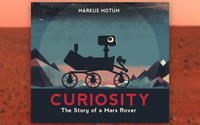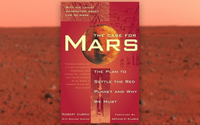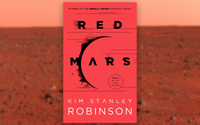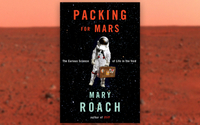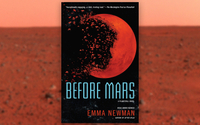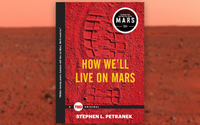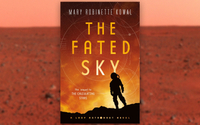The Best Mars Books for Red Planet Fans

Are you excited about NASA's Perseverance rover landing on Mars this summer? We are, too!
Here are some of the best books for young and old alike about the Red Planet. (And some favorite Mars fiction, too.)
Learn everything you need to know about Perseverance here. You can see our full Best Books coverage here.
"Mars: Our Future on the Red Planet"

Sending people to Mars won't be easy, but the journey isn't entirely out of reach.
"Mars: Our Future on the Red Planet" (National Geographic Books, 2016) by award-winning journalist (and Space.com contributor) Leonard David explains how the human race can conquer the challenges of getting to Mars and thrive on the Red Planet, blurring the lines between science fiction and reality.
In the new work, David takes readers on a journey to the future to show what it would take for people to travel to Mars and not just survive, but also prosper in the new world. (You can read more about the book here.)
"Curiosity: The Story of a Mars Rover"
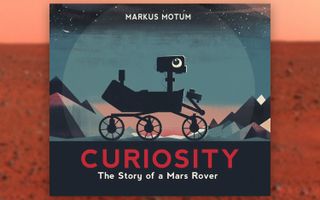
"Curiosity: The Story of a Mars Rover" (Candlewick Press, 2018) by author and illustrator Markus Motum is a children's book brimming with artwork that enchants and abundantly details the interplanetary mission roaming and studying the surface of Mars.
Motum admits he, too, was swept up by the news of Curiosity's tricky landing, and it was the public's excitement over the rover which inspired the book. With consultation from Mars experts, Motum's work offers grand scenes that are conceptual and still accurate. (Read a Q&A with the author and see pages from the book here.)
"The Martian"

"The Martian" (Random House, 2014) by Andy Weir is a truly great science fiction book that's heavy on the science.
Weir tells the story of Mark Watney, a fictional NASA astronaut stranded on Mars, and his difficult mission to save himself from potential doom in the harsh Red Planet environment. Watney seems to have everything against him, yet Weir deftly explains not only what Watney's survival needs are but also how he goes about trying to make them work.
"The Martian" was, of course, also made into a movie in 2015; the film stars Matt Damon as Watney and is directed by space movie veteran Ridley Scott. (Read a comparison of the movie and book here, and read an excerpt from "The Martian" here.)
"The Case for Mars: The Plan to Settle the Red Planet and Why We Must"
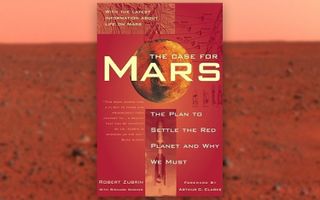
"The Case for Mars" by Robert Zubrin is a landmark work, helping to cast Red Planet settlement as an achievable goal rather than a sci-fi dream.
The book advocates traveling light and living off the Martian land as much as possible. For example, rockets launching from Mars and rovers exploring the surface would both be fueled by methane/oxygen propellant manufactured using carbon dioxide pulled from the Red Planet's air. Settlers would get their water — as well as the materials needed to make iron, steel and glass — from the Martian soil.
"The Case for Mars" also lays out how to terraform Mars, making it a warmer and wetter place more hospitable to human life. Though the book is nearly 20 years old, it remains an engaging and informative read today, because putting boots on Mars remains the top goal of the international human spaceflight community.
"Red Mars"
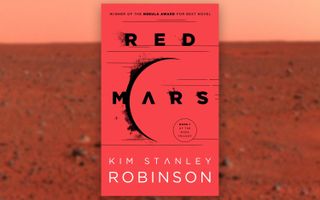
Although the science is a bit out of date now, Kim Stanley Robinson's beloved Mars trilogy, starting with "Red Mars" (HarperCollins, 1993), brought the gritty details about Mars settlement and terraforming to a wide audience and inspired researchers working on NASA's Mars missions today. With Earth in distress (in the later books), humanity strives to make Mars its new home.
"Welcome to Mars: Making a Home on the Red Planet"

Kids can hop aboard the first expedition to Mars in "Welcome to Mars" (National Geographic Children's Books, 2015) by astronaut Buzz Aldrin, written with author, physicist and former NASA flight controller Marianne Dyson.
Aldrin's tale about a trip on the "Aldrin Cycler" spaceship to Mars covers the history of Mars exploration, the steps needed to get there and the process of building out from the first tentative toehold to a permanent colony on the planet. It's full of countless specific details — exactly what the first explorers will and won't need to bring along, the best and most entertaining modes of transportation once there and exactly why the first habitats will be round and bubble-like, to name a (very) few.
The book is also peppered with hands-on activities to demonstrate aspects of the journey and the planet's conditions. This book is not Aldrin's first proposing a mission to Mars, but this one is carefully calibrated to get young, curious children excited about the prospect. (Read more about the book here)
"Packing for Mars: The Curious Science of Life in the Void"

"Packing for Mars" (W.W. Norton & Company) by Mary Roach isn't just about Mars, but we couldn't help but include it.
The book addresses, in satisfyingly rich and refreshingly unabashed detail, the questions that everybody has about human spaceflight. For example: How do astronauts go to the bathroom in zero or reduced gravity? How do they keep clean? What would it be like to have sex in space? Has anyone ever had sex in space?
But the book is far from just a catalog of the scurrilous and scatological; it delves seriously into the physiological and psychological effects of spaceflight and how astronauts, doctors and engineers prepare to meet such challenges. In short, "Packing for Mars" is an incredibly fun read that will give you a better understanding of the rigors of human spaceflight — and provide a wealth of choice details that you can dole out at parties to impress and disgust your friends.
"Before Mars"
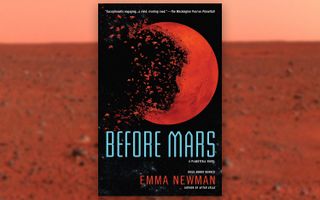
Emma Newman's latest book set in her "Planetfall" universe, "Before Mars" (Ace, 2018) sees a geologist arriving at a small Mars base after a lengthy journey only to realize that things aren't as they seem.
The base's AI is untrustworthy, the psychologist seems sinister, and the main characters finds a note to herself she has no memory of writing. In a world of perfectly immersive virtual reality, can she trust what she sees? Or did the long trip take a toll on her sanity? "Before Mars" takes place on an eerie, largely empty Mars after a giant corporation buys the rights to the planet.
It's a thrilling read but — like Newman's other "Planetfall" books — also a deep dive into the protagonist's psychology as she grapples with what she discovers on the Red Planet. "Before Mars" and the other books in the same universe ("Planetfall" and "After Atlas") can be read in any order, but Space.com highly recommends giving them all a look. (Read a Q&A with Newman here and an excerpt from "Before Mars" here.)
"How We'll Live on Mars"

Stephen Petranek, an award-winning journalist and technology forecaster, thinks people will be living on Mars within 20 years.
Petranek states his case in his book "How We'll Live on Mars" (Simon & Schuster/TED, 2015). Complementing Petranek's TED talk of the same name, the book paints a picture of humanity's first journey to the Red Planet, which he sets in 2027, and describes the key technologies needed to reach, survive and thrive on the planet and exactly how that process would play out. (You can read a Q&A with the author here and an excerpt of the book here.)
"The Fated Sky"
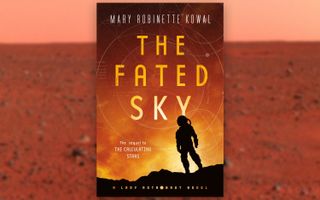
What if space exploration wasn't a choice but a necessity, driven by the knowledge that Earth would soon become uninhabitable and powered by international coalitions built after a catastrophic meteorite impact?
That's the alternative history novelist Mary Robinette Kowal explores in her Lady Astronaut series, "The Calculating Stars" and "The Fated Sky" (Tor, 2018). The books follow mathematician and World War II pilot Elma York, who dreams of becoming an astronaut herself. Kowal intricately melds real history with her fictional plot to create a series that is simultaneously hopeful and pragmatic.
In the series, the Lady Astronaut offers a powerful vision of how spaceflight could be a positive force in society. Book one sees humanity's first trip to the moon, and book two focuses on a multi-ship journey to Mars. (Kowal talks with Space.com about the books here; read an excerpt from Chapter 1 of "The Fated Sky" here.)
Join our Space Forums to keep talking space on the latest missions, night sky and more! And if you have a news tip, correction or comment, let us know at: community@space.com.
Get the Space.com Newsletter
Breaking space news, the latest updates on rocket launches, skywatching events and more!

Space.com is the premier source of space exploration, innovation and astronomy news, chronicling (and celebrating) humanity's ongoing expansion across the final frontier. Originally founded in 1999, Space.com is, and always has been, the passion of writers and editors who are space fans and also trained journalists. Our current news team consists of Editor-in-Chief Tariq Malik; Editor Hanneke Weitering, Senior Space Writer Mike Wall; Senior Writer Meghan Bartels; Senior Writer Chelsea Gohd, Senior Writer Tereza Pultarova and Staff Writer Alexander Cox, focusing on e-commerce. Senior Producer Steve Spaleta oversees our space videos, with Diana Whitcroft as our Social Media Editor.

